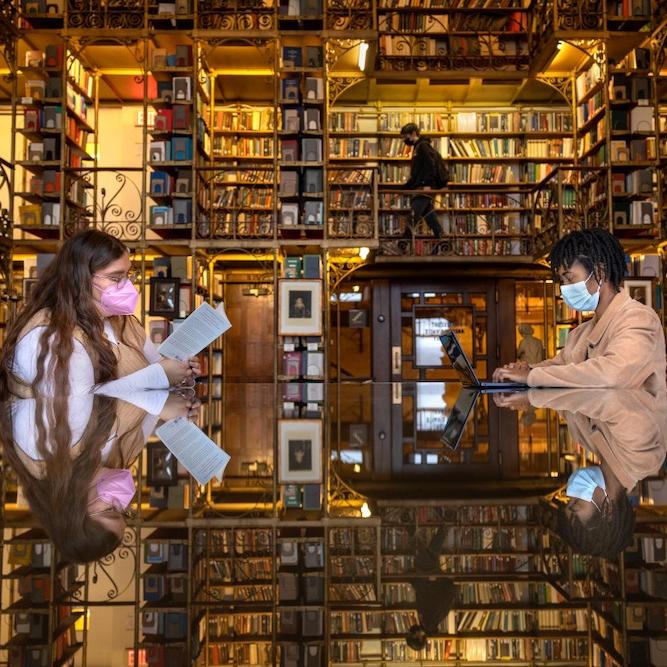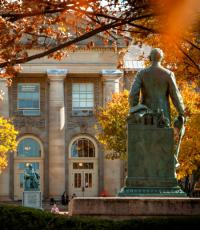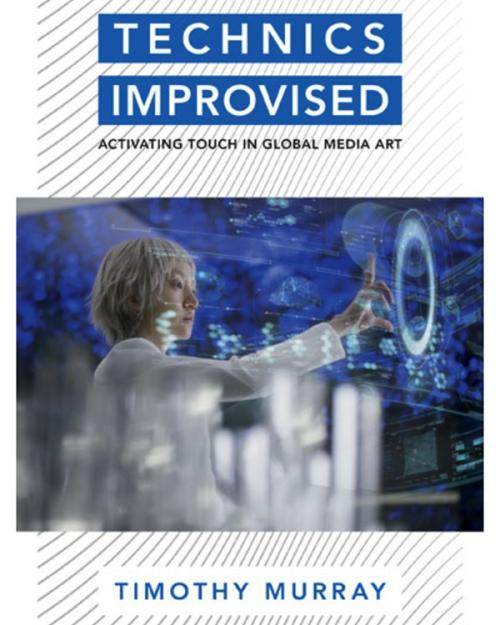Artists who work in new media use screens and data instead of paint, pencil or clay. As electronic and digital technology have evolved, so have the ways new media artists create – and the ways in which they speak out about the digital and physical worlds, scholar Tim Murray writes in a new book.
In “Technics Improvised: Activating Touch in Global Media Art,” Murray, professor of comparative literature and literatures in English in the College of Arts and Sciences and director of the Cornell Council for the Arts, illuminates technological improvisation at the intersection of art and politics. A curator of global new media art for 25 years, Murray uses his book to introduce artists working in digital and electronic media and traces their struggle against the government surveillance and corporate culture that control digital tools.
The College of Arts and Sciences talked with Murray about the book.
Question: You write about “media artists who touch us through our screens.” Please introduce readers to a few new media artists. What do they create, how do we encounter their work, and what appeals to you about their art?
Answer: The vast array of new media arts makes this a tough question. While I refer to hundreds of artworks in “Technics Improvised,” I am particularly drawn to works that reveal and resist the threats to futurity posed by the Anthropocene and by national and corporate systems of digital surveillance and militarization.
A particularly inventive artist in this regard in Shu Lea Cheang, originally from Taiwan and now a “global citizen.” In her vast installation for the 2019 Venice Biennale, she registered the corporeal data of visitors entering her installation and then mixed it via a computer program with images from a series of videos she shot for the exhibition that plot the history of state-sponsored sexual surveillance and punishment. After walking through the corridor capturing their physical characteristics, viewers then were captivated by a surround of large video panels in which the graphics of their contours mixed in real time with imagery from restaged historical cases of famous sex surveillance, fantasy and prosecution, from the Marquis de Sade to Michel Foucault. This all took place within the exhibition space, which used to be Venice’s notorious torture prison.
Such a mixture of the physical with the analog, of history and the personally contemporary, is also prevalent in the computer bio-art projects of Buffalo artist, Paul Vanouse, who will be featured this fall in the 2022 Cornell Biennial. This mixed-race artist has staged live performances to blend the extraction of his and his spectators’ DNA in fantastical visual displays and in politically urgent reflections on the dangerous racist legacy of eugenics as it has creeped into the public and sometimes scientific discourse of genomics. In September, the Cornell community will be invited in live performance to contribute swabs of their own DNA for mixture in the installation Vanouse is creating for the Biennial.
Question: What is new media’s relationship to corporations and the world of commerce?
Answer: Many of the video and new media works on CD-ROM in the 1980s and early 1990s were created by artists working independently as they experimented with their own analog and digital tools. That shifted dramatically from the mid-1990s on with the consolidation of corporate software packages on which many artists became dependent, with the rapid expansion and corporate consolidation of personal computing and the World Wide Web, and with the subsequent data surveillance of all users by corporate and/or government sponsors.
Works by new media artists are also imperiled by corporate “planned obsolescence” of software and hardware. Apple’s shift to the INTEL chip at the turn of the millennium, for example, rendered most 1990s works created on CD-ROM unreadable on contemporary Apple computers. Similarly, in 2021, Adobe abandoned support of the Adobe Flash player which was a constitutive element of most artworks created for the internet in the 1990s and 2000s.
While Cornell’s Rose Goldsen Archive of New Media Art holds one of the world’s largest collections of “net.art,” these works are currently inaccessible without the digital infrastructure of Flash. It is to offer an alternative conceptual approach to the corporate power of the technological that “Technics Improvised” stages dialogues between philosophers and artists who are committed to interrogating and challenging these “sovereign” relations.
Question: You conclude “Technics Improvised” with a proposal for an exhibition. What does “Future Fever” say about the future? Do you think this exhibit will ever come to be?
Answer: Soon after completion of “Technics Improvised,” I began planning the details of the 2022 Cornell Biennial. For the Biennial, I am pleased to be able to feature an exhibition, which opened on July 13, of screen arts in the Herbert F. Johnson Museum of Art to reflect the Biennial theme coming from the book “Futurities, Uncertain.” Of the five works scheduled for screening through the fall, four of the pieces are featured in my proposed exhibition in “Technics Improvised” – by international artists Patricia Domínguez, Larissa Sansour and Søren Lind, Moon Kyungwon and Jeon Joonho, and Karrabing Film Collective. This overlap is a great example of how Cornell theoretical research and publications in the humanities and the arts can be transformed into accessible public experiences for the human good.






